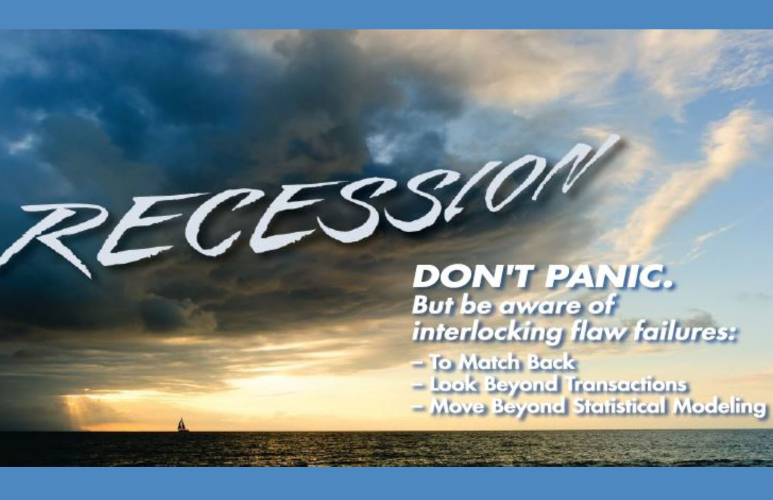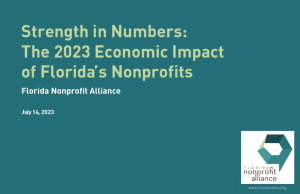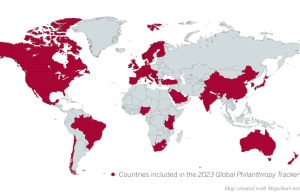Accelerate when others are pulling back
If there hadn’t been pandemic giving, 2022 would look like a good year for fundraising. Industry data show that year-to-date giving through the mail has increased by 22% compared to two years ago. Marketing channels coming into their own, like programmatic digital and connected TV, have grown even more during that time.
The challenge for most organizations is that giving in 2021 had increased from 2020, and 2020 from 2019. Even before the pandemic, fewer people were giving, and donors were giving more on average. Those trends are continuing once again. Everyone knew the COVID bubble would not last, and it is good that it defl ated rather than popped.
On top of this, the country faces challenging economic times. Inflation is climbing, gas prices holding higher, and mortgage rates have doubled. JP Morgan Chase CEO Jamie Dimon warns of a recession in the next six to nine months and shared, “You can’t talk about the economy without talking about stuff in the future…and this is serious stuff.” He added that he thinks Europe is in a recession already, that the U.S. is probably next, and that these things happen every seven years. However, it’s been 13 years since the last one.
So here we are, a deflated COVID bubble, an impatient leadership, and storm clouds on the horizon.
The specter of a recession haunts the future. Overall giving during the Great Recession dropped from 2007 to 2009 and only then started to inch back up. It was the same for the Great Depression, where there were two years of decreased giving. It’s not as bad as you might think. Researchers at The Center on Philanthropy at the Indiana University Lilly Family School of Philanthropy found that even with recessions that lasted more than eight months, giving fell less than 3%.
Moreover, these losses are usually from those areas most strongly correlated with the stock market: major, corporate, and foundation giving. That’s right — economic downturns do not substantially hurt direct marketing. Giving through the mail and digital channels has been relatively robust, even in difficult economic times. The reason for it is that direct marketing donors tend to be of an age where income is fixed, or their job is settled. Young people tend to be more impacted by economic downturns. Smaller gifts also tend to be mentally budgeted. People are loath to take money from a category they’d already set aside. Therefore, they are more likely to substitute one charitable act for another than a charitable act for a noncharitable one. That’s why people are more likely to increase their giving in good times than decrease their giving in bad ones.
Part of why there are declines in times like the Great Recession is fear itself, to steal from Franklin Delano Roosevelt. Mail volume dropped about 13% from 2008 to 2009 according to the United States Postal Service. Few studies of philanthropic giving during this time factor this in. In other words, organizations raised less because organizations asked less by mail.
As the sector weathers the coming economic storm, don’t panic. Here’s why: Let’s say an organization with a stable donor file and industry average retention cut acquisition for just one year. History shows it would take four years to get their total number of donors back to where they were before the pause. And it would take seven years before their core three-or-more-year renewing donors recovered. That’s a seven-year recovery for a one-year decision.
You likely should seize the opportunity that comes from others’ fear. Other organizations — for-profit and nonprofit — might pull back their mail, their email, and their advertising, which means less competition for that mailbox, inbox, and eyeball. In fact, with both Netfl ix and Disney+ announcing advertising-based streaming services, you could be entering the nirvana of increasing inventory and decreasing competition in programmatic video advertising. Since this already has positive return on investment even in acquisition co-targeting, there’s a great opportunity to meet prospects and donors where they are at that moment.
But in this climate, you probably are not going to get that large investment budget approved. So, it’s time to trim smartly. For example, modern modeling means you don’t have to wait three years to see how your newly acquired donors work out. Your partners should be able to project donor value based on the past. More importantly, you can shift your acquisition investment away from that list with the seductively low cost-to-acquire but results in a cohort of one-and-done.
You also want to make sure your audiences are being built intelligently. Nonprofits often systematically spend too much to acquire and retain donors older than age 80. This is because of three interlocking flaws in some data infrastructures:
• Failure To Match Back
If you look only at mail results, 80+ year-olds do better than 50- or 60-somethings. But when you also look at digital results, you’ll see the reverse. For those younger donors, mail is the channel of infl uence, but digital is the channel of transaction.
• Failure To Look Beyond Transactions.
In a transaction-based model, a factor like how long someone has been giving weighs heavily. But a 49-year-old can’t have a 50-year giving history because, well, you know…math.
• Failure To Move Beyond Statistical Modeling
In a regression analysis, things are either good or bad. In the main, older donors are better donors. But this ignores that financial and community resources wane at a certain age, and people give less. Using more advanced algorithms allows you to find not only the optimal age for donations but what that optimal age is for each individual. In short, old modes of analysis are costing you money. A small investment in modeling can save the stamp, the ad, the mail piece, and the effort. And it can put that investment into something that can work.
Once you have the audience you want, take advantage of their most important resource: time and attention.
That means customization. For example, the cost of a mail piece is in the physical material and stamp. Customization is relatively inexpensive and makes that material and stamp far more worthwhile. Even simple things like whether they are a cat or dog person, whether they have volunteered, and what city they live in make a difference in response rates and revenues.
That also means omnichannel marketing is important. Folks talk about mail co-ops and digital co-ops, and programmatic lists. It should all be one. Every “mail donor” has a phone, a television, an email address, a mobile device, and probably several streaming channels. No one is different when they are opening a real envelope instead of an envelope icon.
These channels are the closest thing direct marketers have to two plus two, equaling five. In test after test, layering channels not only makes money in the additional channels but also increases the effectiveness of all other channels. A rising tide lifts all boats. And the advantage of being a direct marketer today is choosing which boats to float.
All these tips can help at any time, not just during challenging economic environments. But tough times are the best times to be a fundraiser. You have an excuse to push the envelope, to drive harder for results. After all, anyone can fundraise in good times; you are here for the challenge — to help great causes through the narrow straits and come out safe on the other side.
Steve Harrison is president of CDR Fundraising Group in Lanham, Maryland. His email is [email protected]











